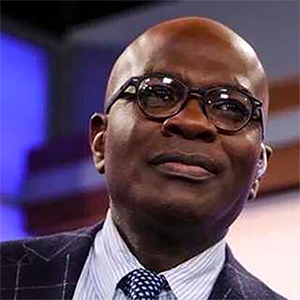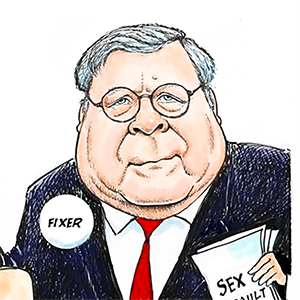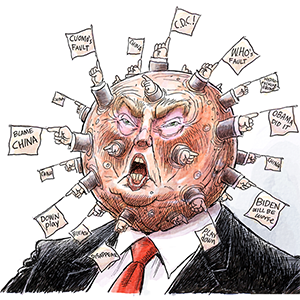Beth Kowitt: What if bureaucracy is… good?
Published in Op Eds
Even in our ultra-polarized era, the public and private sectors seem to have reached a consensus on the common scourge of our time: bureaucracy.
JPMorgan Chase & Co. CEO Jamie Dimon can’t hide his disdain for it, mentioning some form of the word 21 times in his April letter to shareholders and going so far as to say it “kills” companies. Amazon.com Inc. CEO Andy Jassy wrote in his annual missive that people who are trying to build things hate it — that it frustrates and slows them down. Over at the State Department, Marco Rubio identified bureaucracy as the reason for the organization’s massive cuts and restructuring. And Department of Government Efficiency head Elon Musk famously waved a chainsaw in the air, pledging to slash through what he has called the “tyranny of bureaucracy” in the federal government.
Bureaucracy is an easy scapegoat, a way to rally support and advance an agenda by evoking something that is universally reviled. Who doesn’t hate waiting in line at the DMV, filling out seven pages of paperwork at the doctor’s office or the headache that can come with getting an expense report approved? “It’s kind of unifying,” says Pedro Monteiro, an assistant professor at Copenhagen Business School. “It’s easy to attach our grievances to this very amorphous thing.”
But bureaucracy isn’t just inertia, disengagement and red tape. It’s also order and stability. While bureaucracy has evolved into a pejorative term used to describe complicated and pointless administrative procedures, bureaucracy is, at its core, an administrative system and way of organizing.
It’s the framework that provides the hierarchy and formalized rules that help an institution run. “The opposite of bureaucracy is not freedom and agility — it’s chaos,” says Mike Lee, a professor of organizational behavior at INSEAD. “When you remove all the formal structures, things become opaque, less fair and power concentrates at the top.” Exhibit A: DOGE, which has managed to create more turmoil in the federal government than it has efficiency.
Bureaucracy didn’t always have such a bad rap. Before becoming a staple of office life, it emerged as an alternative to feudalism — a way to put people into jobs based on their technical merit and skill rather than at the king’s pleasure. Even today, more bureaucratic institutions are likely to be fairer ones, in which competence holds a higher value than connections.
In corporate America, where bureaucracy has become synonymous with middle management, a trend called “unbossing” has taken hold. In 2023, Meta Platforms Inc. CEO Mark Zuckerberg kicked it off with his call for the “year of efficiency,” telling employees, “I don’t think you want a management structure that’s just managers managing managers, managing managers, managing managers, managing the people who are doing the work.”
At pharmaceutical giant Bayer AG, CEO Bill Anderson has implemented what he calls “dynamic shared ownership,” eliminating managers as the company moves to self-directed teams. Watching what Musk has done to the federal government has only given CEOs greater license to amp up the anti-bureaucracy rhetoric. Speaking at a recent conference, Gallup CEO Jon Clifton noted that some executives are “musing about the idea that they want their own DOGE departments.”
This kind of flattening or “delayering” is supposed to push decision-making down to the workers on the ground. In practice, though, it can also be a euphemism for cost cutting. It also can end up consolidating control at the top, with CEOs reporting that flattening actually got them deeper into the weeds on daily decision making.
That’s not to say unbossing can’t work. But the companies that have done it successfully have had to implement more structure and process. When Zappos.com Inc. transformed into a self-managed holacracy, in which decision-making and authority is spread across an organization, employees’ roles became much more tightly defined and its 150 departmental units turned into 500 team circles. Wikipedia is run by a collaborative community of volunteers but has implemented a lot of bureaucracy to function effectively.
A big risk of removing the structures that come with bureaucracy is the question of what will emerge in their stead. “It’s really easy to break things and hard to build a high-functioning, high-performing organization in its place,” Lee told me. Doing so requires thoughtful, intentional action and design, yet Lee says the conversation rarely gets to that point.
One reason companies keep defaulting to bureaucracy is because it works, for better or worse, as “both a weapon of domination and the primary tool for realizing many of humanity’s most significant undertakings,” Monteiro has written.
For a case in point, look no further than Dimon’s attempts to rid JPMorgan of its extraneous processes and procedures: He layered on even more of them, deploying a team tasked with investigating the “stupid stuff we do, the bureaucratic stuff we do.”
_____
This column reflects the personal views of the author and does not necessarily reflect the opinion of the editorial board or Bloomberg LP and its owners.
Beth Kowitt is a Bloomberg Opinion columnist covering corporate America. She was previously a senior writer and editor at Fortune Magazine.
_____
©2025 Bloomberg L.P. Visit bloomberg.com/opinion. Distributed by Tribune Content Agency, LLC.




























































Comments